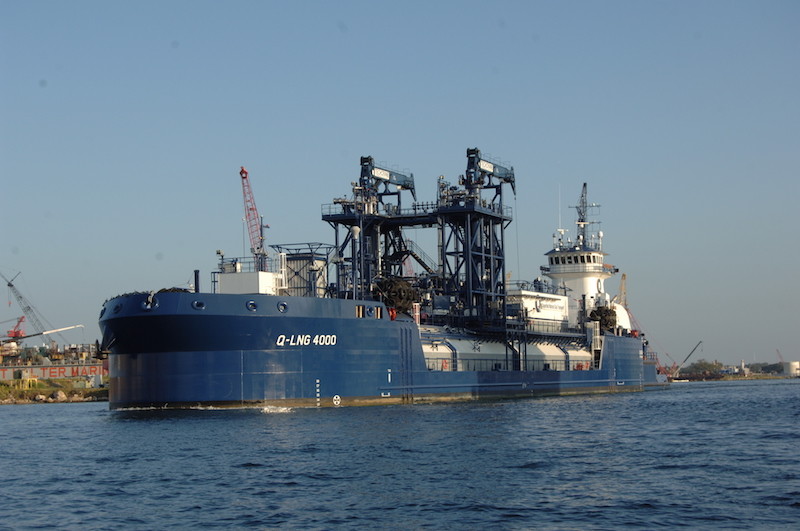Q-LNG Transport and Shell Trading (US) C0. announced that the first offshore liquified natural gas (LNG) bunkering articulated tug and barge (ATB) in the U.S., the Q-LNG 4000 is now ready for operations.
Designed to provide ship-to-ship transfers of LNG to vessels utilizing LNG and ship-to-shore transfers to small scale marine distribution infrastructure, the ATB is an integral part of the LNG infrastructure along the southeast U.S. coast. Q-LNG officials said the development of marine LNG infrastructure is an important step in the safe, reliable transportation and delivery of LNG in North America.
The ATB is made up of the 4,000-cubic meter, 324'x64'x32'6" liquid natural gas barge Q-LNG 4000 and the 128'x42'x21' 5,100-hp tug, Q-Ocean Service.
The Q-Ocean Service is powered by twin GE 6L250 MDC, Tier 4 main engines and connected to Wartsila Z-drives. Both the barge and tug were built at Pascagoula, Miss.-based VT Halter Marine.
Q-LNG 4000 and Q-Ocean Service are designed to provide ship-to-ship transfers of LNG to vessels that use LNG as a fuel source and also ship-to-shore transfers to small scale marine distribution infrastructure in the Gulf of Mexico and abroad.
“Shell has an ambition to be a net-zero emissions energy business by 2050 or sooner, in step with society, and we are working hard to deliver the kind of solutions our customers need now to help them decarbonize,” Karrie Trauth, general manager for shipping and maritime, Americas, said in a statement announcing the first. “LNG is an important part of the solution today, and I’m proud that this vessel will effectively double the number of LNG bunker vessels in the U.S. and making it possible for us to continue to help others accelerate their own transition.”
The barge complements Shell’s existing global network of six LNG bunker vessels to meet the growing global demand for cleaner maritime fuels.
“I’m pleased to have taken delivery and to begin our long-term service contract with Shell Trading,” Shane Guidry, CEO of Q-LNG said. All of my companies, including Q-LNG, are focused on, and will continue to do our part to design, build and operate vessels that will assist with the quest to decarbonize. We look forward to delivering extremely safe and reliable service, as we have done for Shell all of my career. I absolutely want to thank all of those with Shell who were very helpful throughout the build process and to especially thank everyone on my team, whom all remained focused and committed, with boots on the ground 24/7 to get this vessel across the finish line.”
Compared to heavy fuel oil, LNG reduces greenhouse gas emissions by up to 21% for 2-stroke engines and up to 15% for 4-stroke medium speed engines as well as significantly reducing pollution from nitrogen oxides and particulate matter compared to conventional marine fuels. This fuel type also meets IMO 2020 sulphur regulations.





